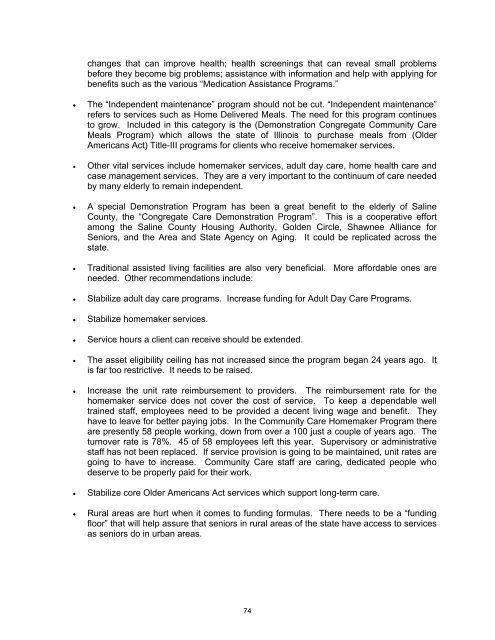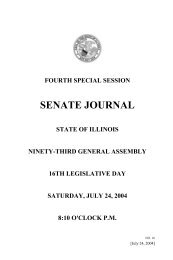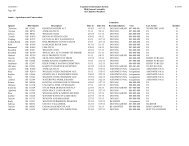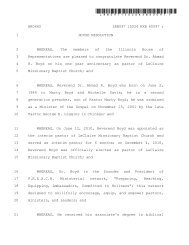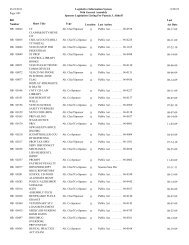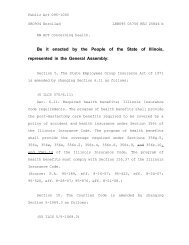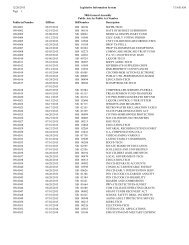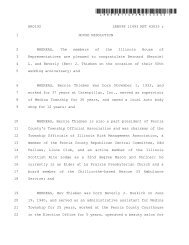Long-Term Care - Illinois General Assembly
Long-Term Care - Illinois General Assembly
Long-Term Care - Illinois General Assembly
You also want an ePaper? Increase the reach of your titles
YUMPU automatically turns print PDFs into web optimized ePapers that Google loves.
changes that can improve health; health screenings that can reveal small problems<br />
before they become big problems; assistance with information and help with applying for<br />
benefits such as the various “Medication Assistance Programs.”<br />
• The “Independent maintenance” program should not be cut. “Independent maintenance”<br />
refers to services such as Home Delivered Meals. The need for this program continues<br />
to grow. Included in this category is the (Demonstration Congregate Community <strong>Care</strong><br />
Meals Program) which allows the state of <strong>Illinois</strong> to purchase meals from (Older<br />
Americans Act) Title-III programs for clients who receive homemaker services.<br />
• Other vital services include homemaker services, adult day care, home health care and<br />
case management services. They are a very important to the continuum of care needed<br />
by many elderly to remain independent.<br />
• A special Demonstration Program has been a great benefit to the elderly of Saline<br />
County, the “Congregate <strong>Care</strong> Demonstration Program”. This is a cooperative effort<br />
among the Saline County Housing Authority, Golden Circle, Shawnee Alliance for<br />
Seniors, and the Area and State Agency on Aging. It could be replicated across the<br />
state.<br />
• Traditional assisted living facilities are also very beneficial. More affordable ones are<br />
needed. Other recommendations include:<br />
• Stabilize adult day care programs. Increase funding for Adult Day <strong>Care</strong> Programs.<br />
• Stabilize homemaker services.<br />
• Service hours a client can receive should be extended.<br />
• The asset eligibility ceiling has not increased since the program began 24 years ago. It<br />
is far too restrictive. It needs to be raised.<br />
• Increase the unit rate reimbursement to providers. The reimbursement rate for the<br />
homemaker service does not cover the cost of service. To keep a dependable well<br />
trained staff, employees need to be provided a decent living wage and benefit. They<br />
have to leave for better paying jobs. In the Community <strong>Care</strong> Homemaker Program there<br />
are presently 58 people working, down from over a 100 just a couple of years ago. The<br />
turnover rate is 78%. 45 of 58 employees left this year. Supervisory or administrative<br />
staff has not been replaced. If service provision is going to be maintained, unit rates are<br />
going to have to increase. Community <strong>Care</strong> staff are caring, dedicated people who<br />
deserve to be properly paid for their work.<br />
• Stabilize core Older Americans Act services which support long-term care.<br />
• Rural areas are hurt when it comes to funding formulas. There needs to be a “funding<br />
floor” that will help assure that seniors in rural areas of the state have access to services<br />
as seniors do in urban areas.<br />
74


